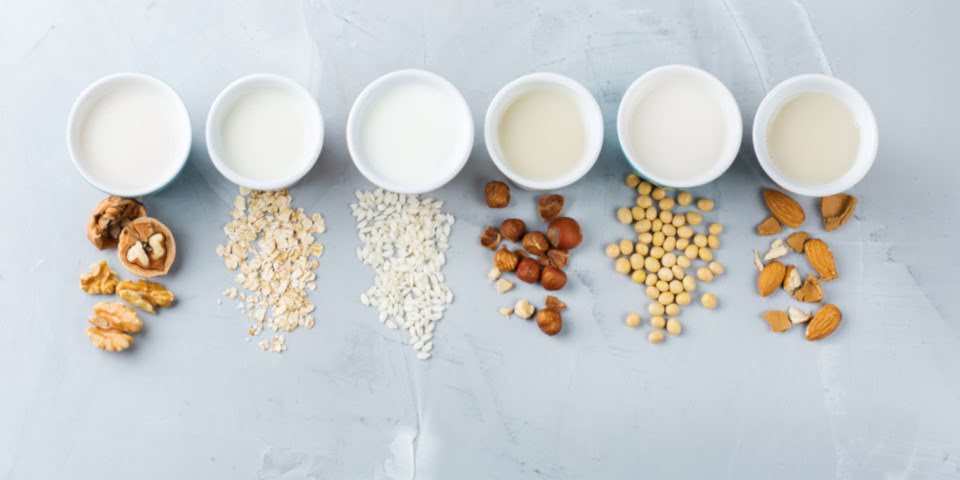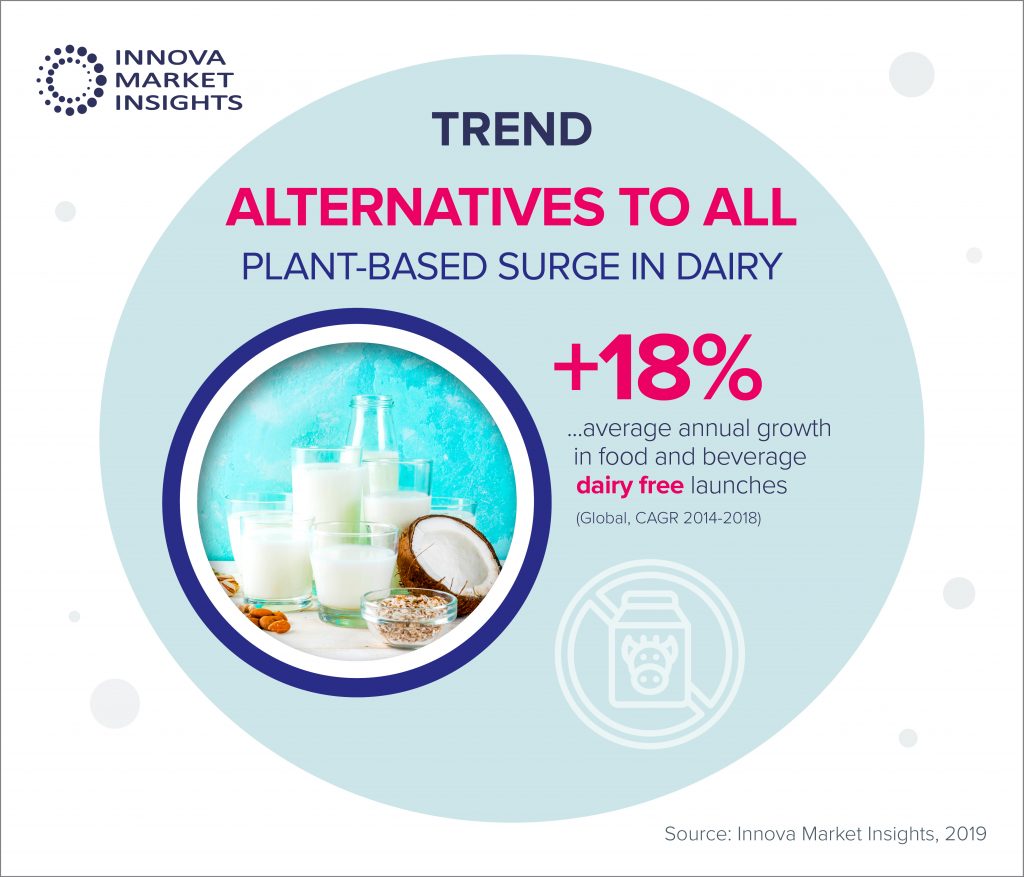Consumers are choosing plant-based meat and dairy alternatives for many reasons, but health remains the key driver.
This is the latest finding from Dutch consumer research company Innova Market Insights (IMI), whose ‘Top Trends for 2019’ report looks at the rise of replacement foods and ingredients.
IMI found that half of US consumers say health is a reason for buying alternatives to meat or dairy. This figure compares with 36 per cent who cite “variety” in their diets, 18 per cent who cite “novelty” and 17 per cent who cite “sustainability”.
Dairy the prime moover
Dairy alternatives are the big winner from the rise in alternative foods. IMI reports 18 per cent average yearly growth in food and beverage dairy-free launches (Global, CAGR 2014-2018).
Director of Innovation at IMI Lu Ann Williams said: “More consumers are adopting vegan or lactose-free diets, while others are turning to plant-based foods for other perceived health benefits.
“In the western world, in particular, the market is evolving rapidly. It has diversified beyond dairy-alternative drinks to include alternatives to yogurt, cheese and ice-cream. At the same time, the range of ingredients used to replace milk continues to expand and advance.”
NPD in dairy alternatives has been increasing across the board, with double-digit CAGRs in launch numbers between 2013 and 2018.
Beverages continue to lead the market. In fact, according to IMI, dairy-alternative drinks accounted for more than 7.6 per cent of global dairy launches in 2018. The popularity of ‘spoonable’ non-dairy yogurt has also risen, but from a smaller base. Its share of dairy launches has gone from less than 0.5 per cent in 2012 to 1.7 per cent in 2018.
Are consumers going nuts?
An increasing variety of non-soy plant-based ingredients are appearing, including cereals such as rice, oats and barley. There’s also an increase in nuts, such as almonds, hazelnuts, cashews, walnuts and macadamias. Coconut is also on the rise, as are more unusual options such as lupin, hemp and flaxseed.
Dairy alternatives are thriving across North America and Western Europe, says IMI. But “positioning and formulation choices” can vary from country to country. National knowledge remains vital to development. For example, veganism is the dominant driver in some countries, while in others it’s lactose concerns.
Ms Williams said: “Product choice has never been so diverse. Innovators are continuing to deliver more complex, convenient and indulgent options.
“Key opportunities include the use of a wider range of plant-based ingredients, greater segmentation with the more mainstream, and the development of more indulgent options. One of the key challenges may be improving sustainability credentials in some instances.”






